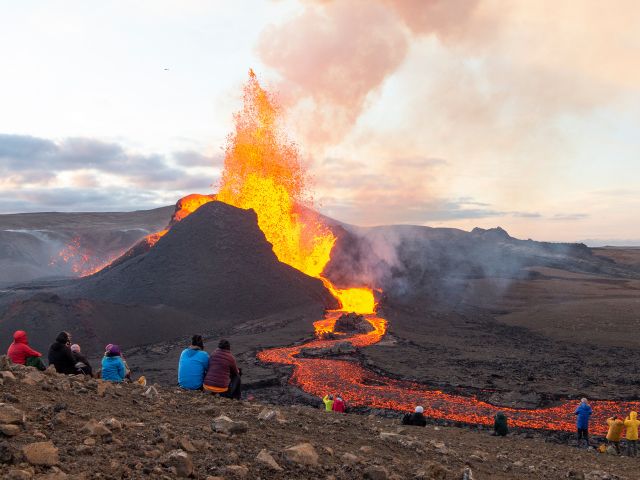
 Business
Business 
Unless you live in Alaska or Hawaii, you’ve likely never seen a volcano, active or otherwise. As far as natural wonders go, they’re beautiful yet terrifying, especially during an eruption. There are some 1,500 active volcanoes in the world, most of them under the oceans. Fortunately, plenty of above-water volcanoes still offer wondrous, breath-taking, and even safe views, whether from a distance or up close. Here are four volcanoes you absolutely must see in your lifetime.
Despite not having erupted since 1708, Mount Fuji is one of the world’s most iconic volcanoes. This beautiful snowcapped peak stands at 12,389 feet tall. Visible from Tokyo on clear days, Mount Fuji looms large, still inspiring art, songs, and national pride after hundreds of years.
Four trails are available for hiking to the summit from early July to early September. It’s a beginner-safe climb, but climbers should still be in good shape and expect some challenges during the ascent.
Eyjafjallajökull, also known by its numeronym, E15, is actually an ice cap. E15 covers the caldera of the volcano, which erupts often and, in 2010, threw up so much smoke and ash that it disrupted air flights across Europe. Eyjafjallajökull remains a popular tourist spot and is currently safe to visit, hike, and view by helicopter. You can likewise enjoy Iceland’s own uncommon beauty on the glacier itself and elsewhere.
A visit to Hawaii will bring you into contact with not just one but six volcanoes, four of which are active. But the real star of the show is Kīlauea, which has had a steady stream of eruptions since 1983—although not all eruptions are explosive. Kīlauea and its sister volcanoes emit streams of lava that pour into the sea to cool, expanding the island and providing fertile soil. To see Kīlauea and so much more, Hawaii Volcanoes National Park is worth a visit any time of year.
The last of our four volcanoes you absolutely must see in your lifetime comes with a fascinating history lesson. Mount Vesuvius buried the ancient Roman cities of Herculaneum and Pompeii sometime in 79 BCE, sadly killing thousands but perfectly preserving a snapshot of Roman life in ash. Close to Naples, Vesuvius last erupted in 1944. It offers hiking and beautiful views of the surrounding land, and a visit to the excavated parts of Pompeii and Herculaneum is an eye-opening look into the past.
Volcanoes may not be the first things you think of as tourist spots. Once you get there, however, you won’t easily forget these smoldering, breath-taking natural wonders.
24World Media does not take any responsibility of the information you see on this page. The content this page contains is from independent third-party content provider. If you have any concerns regarding the content, please free to write us here: contact@24worldmedia.com